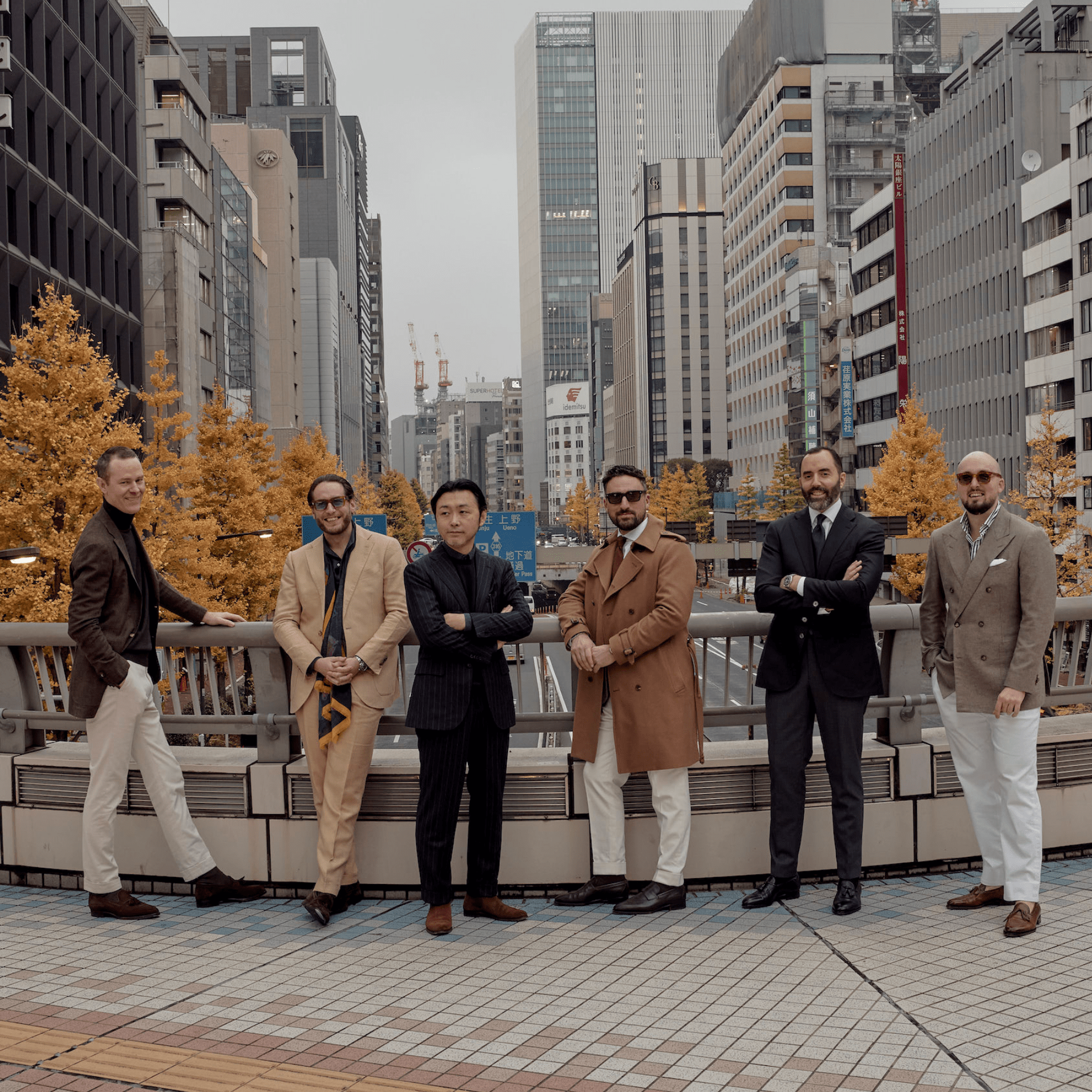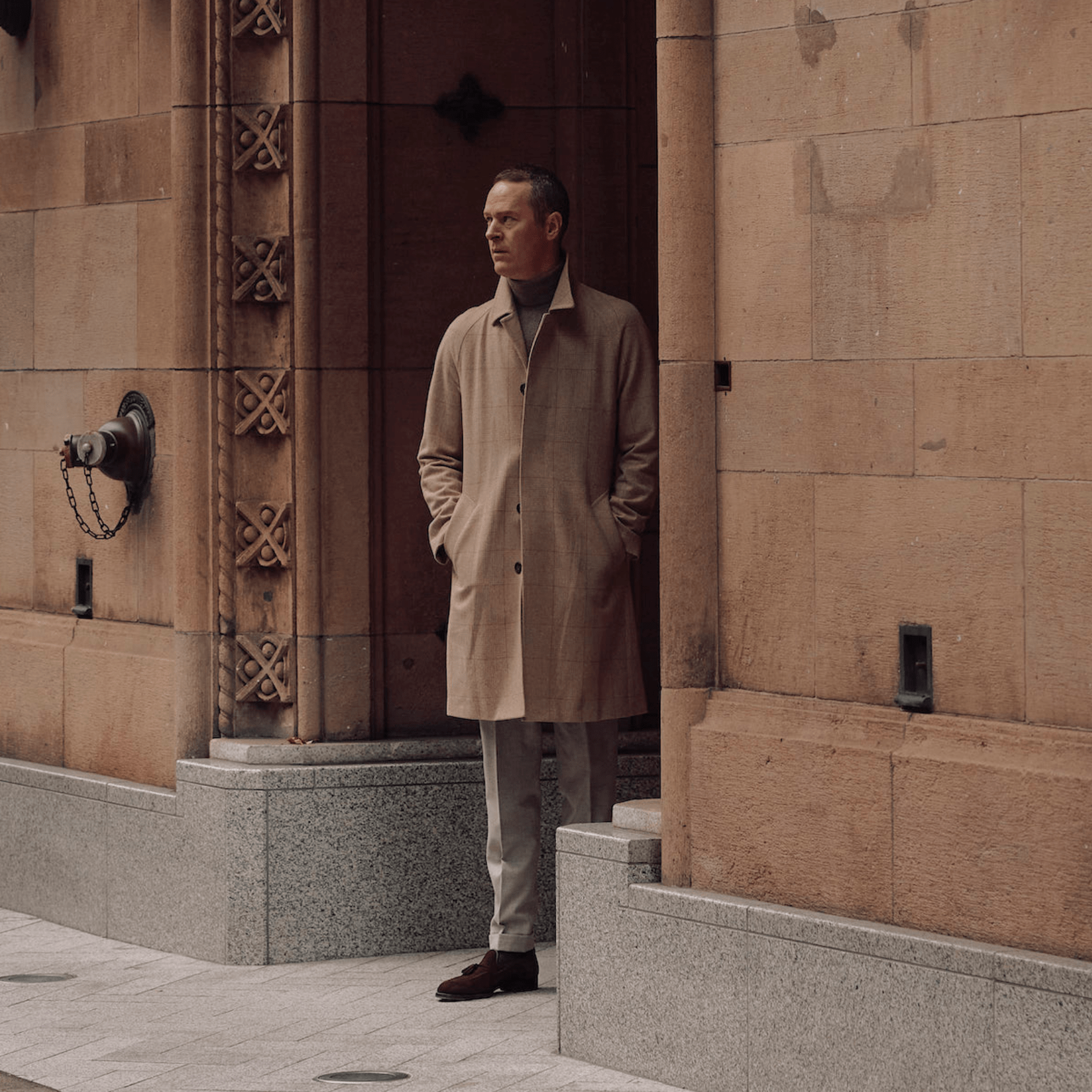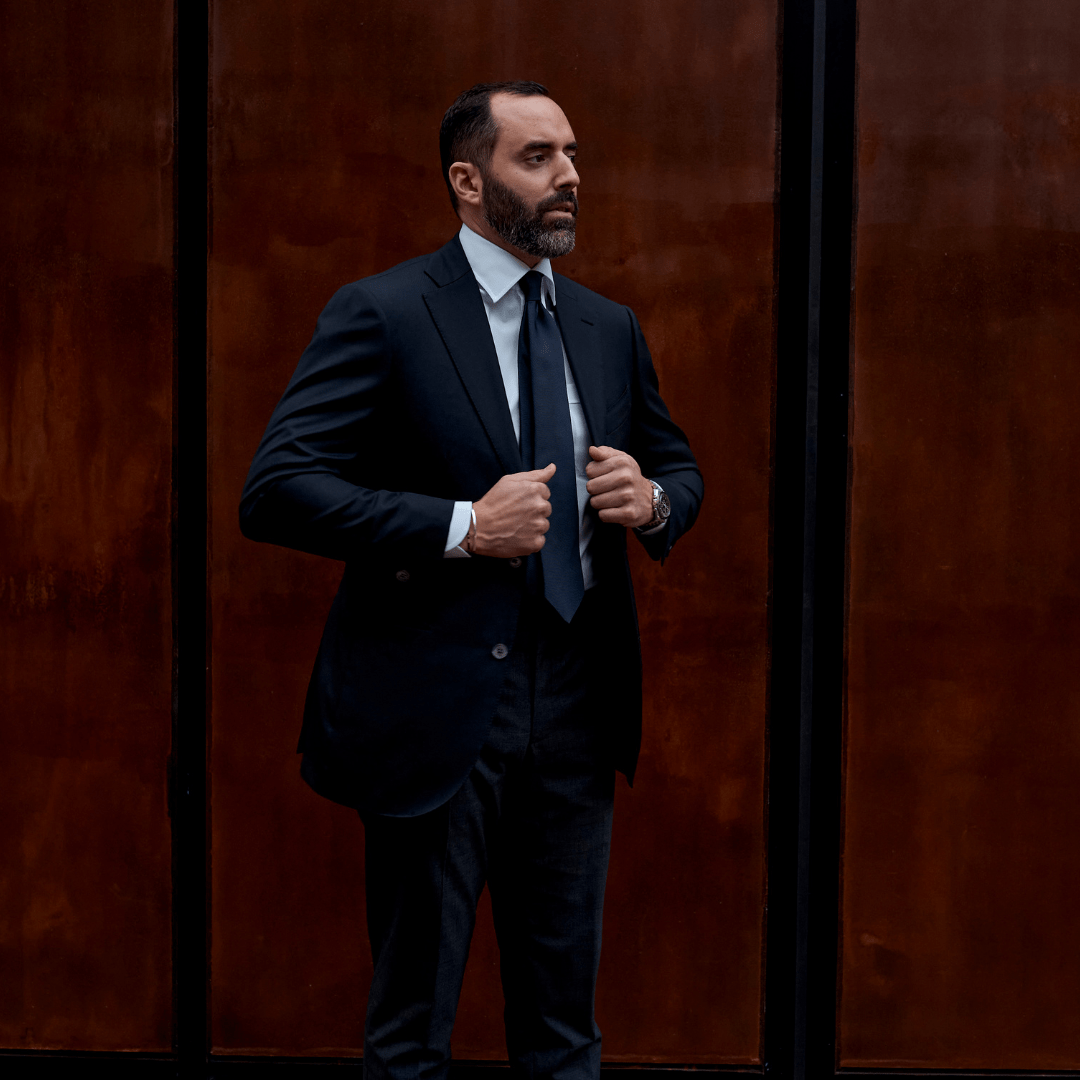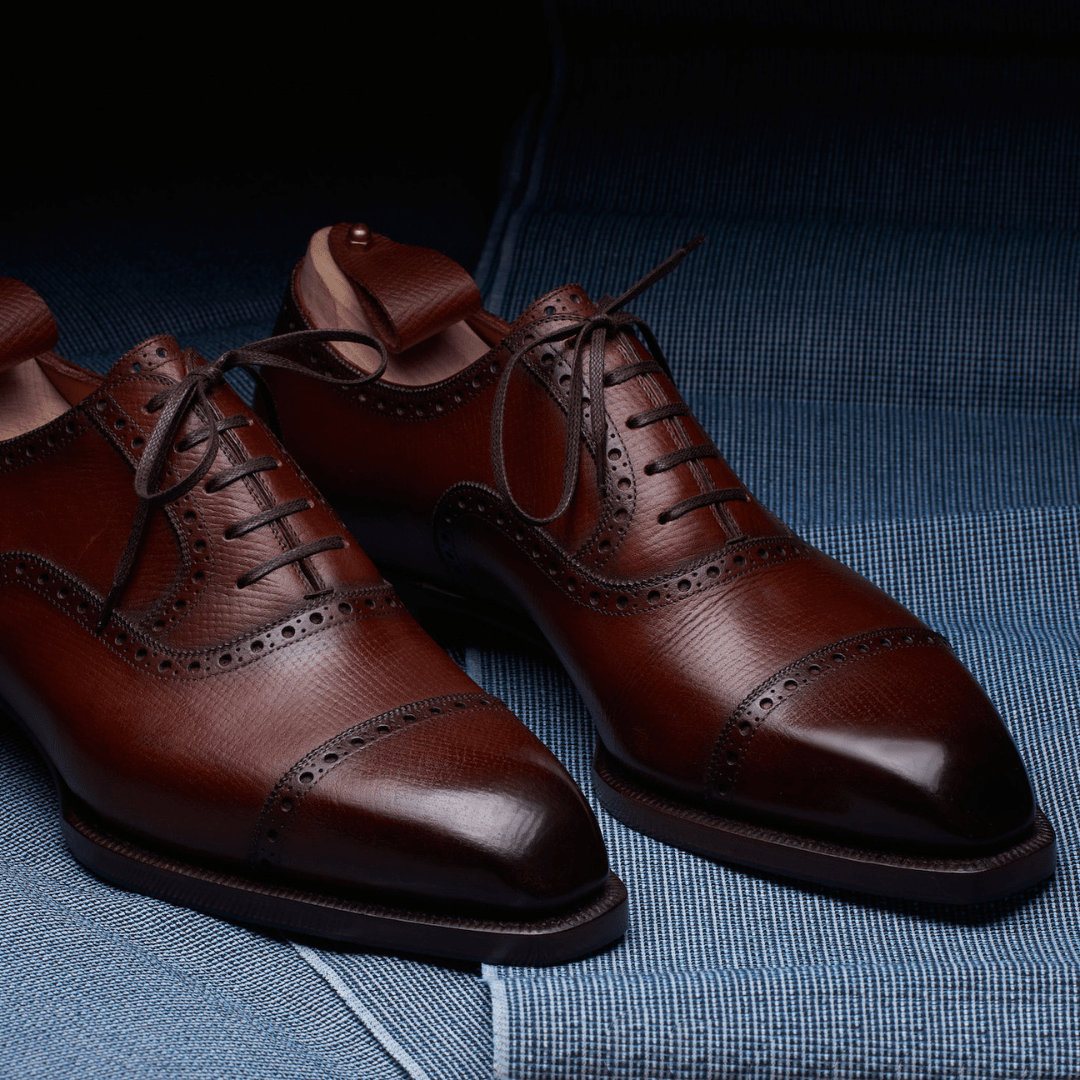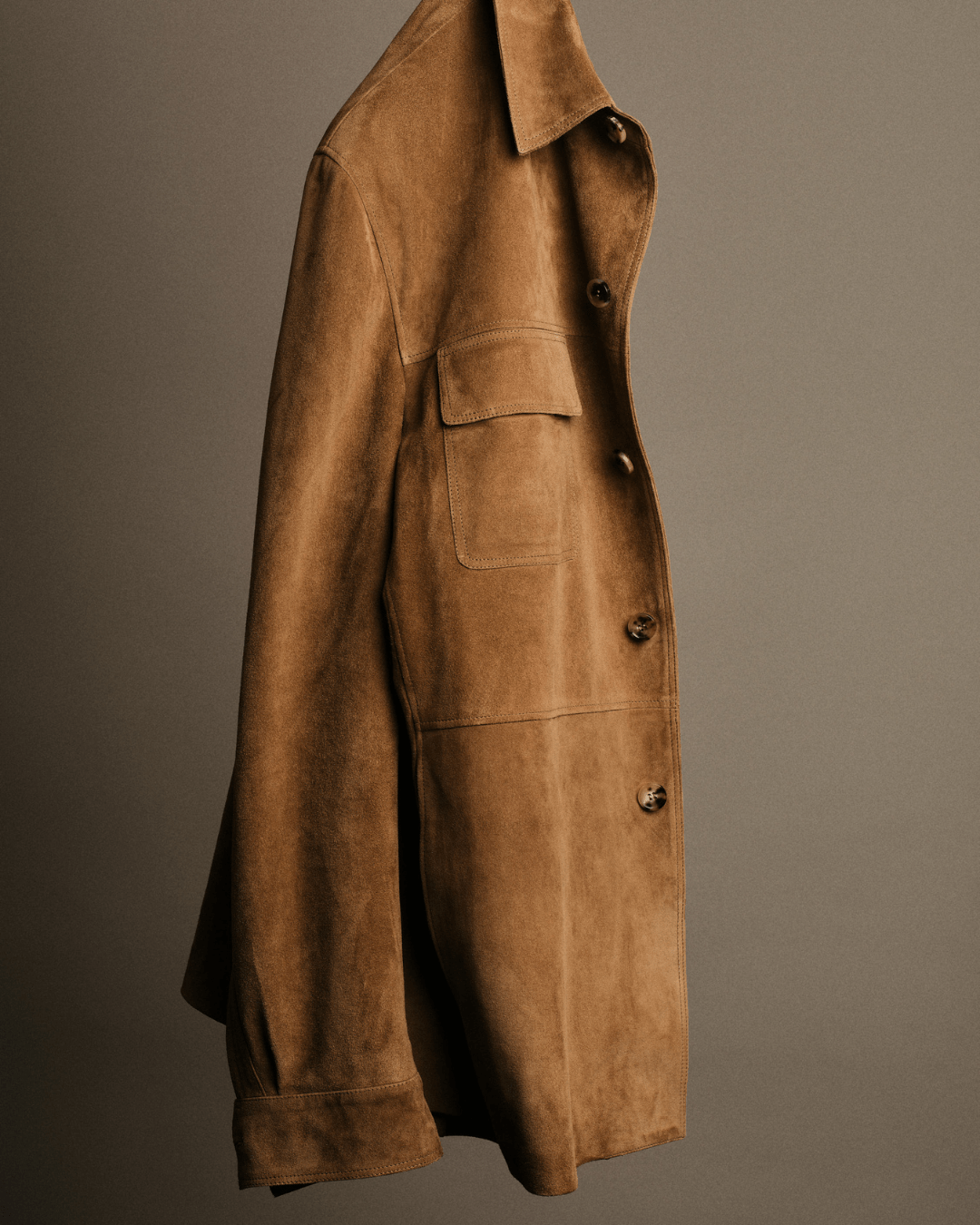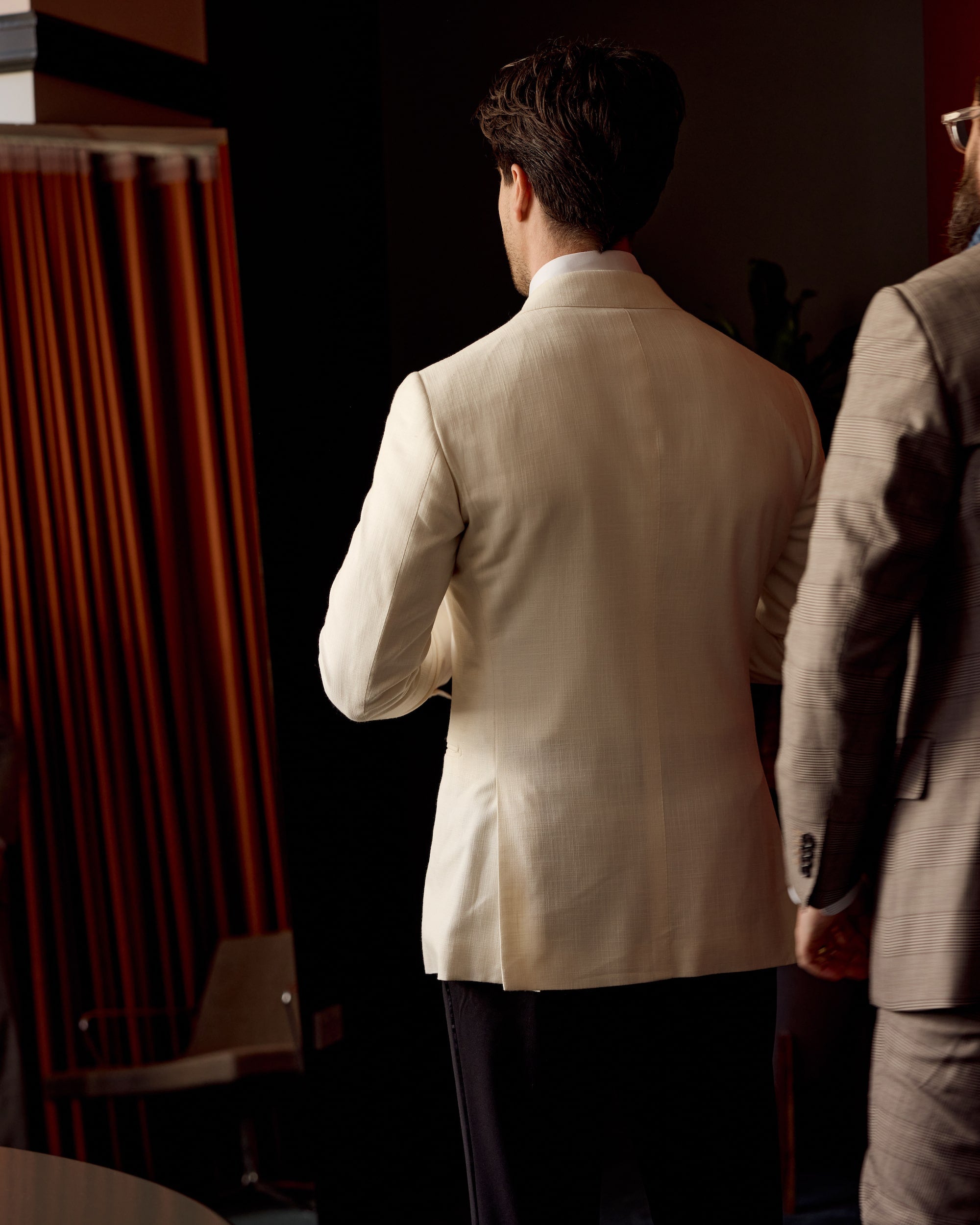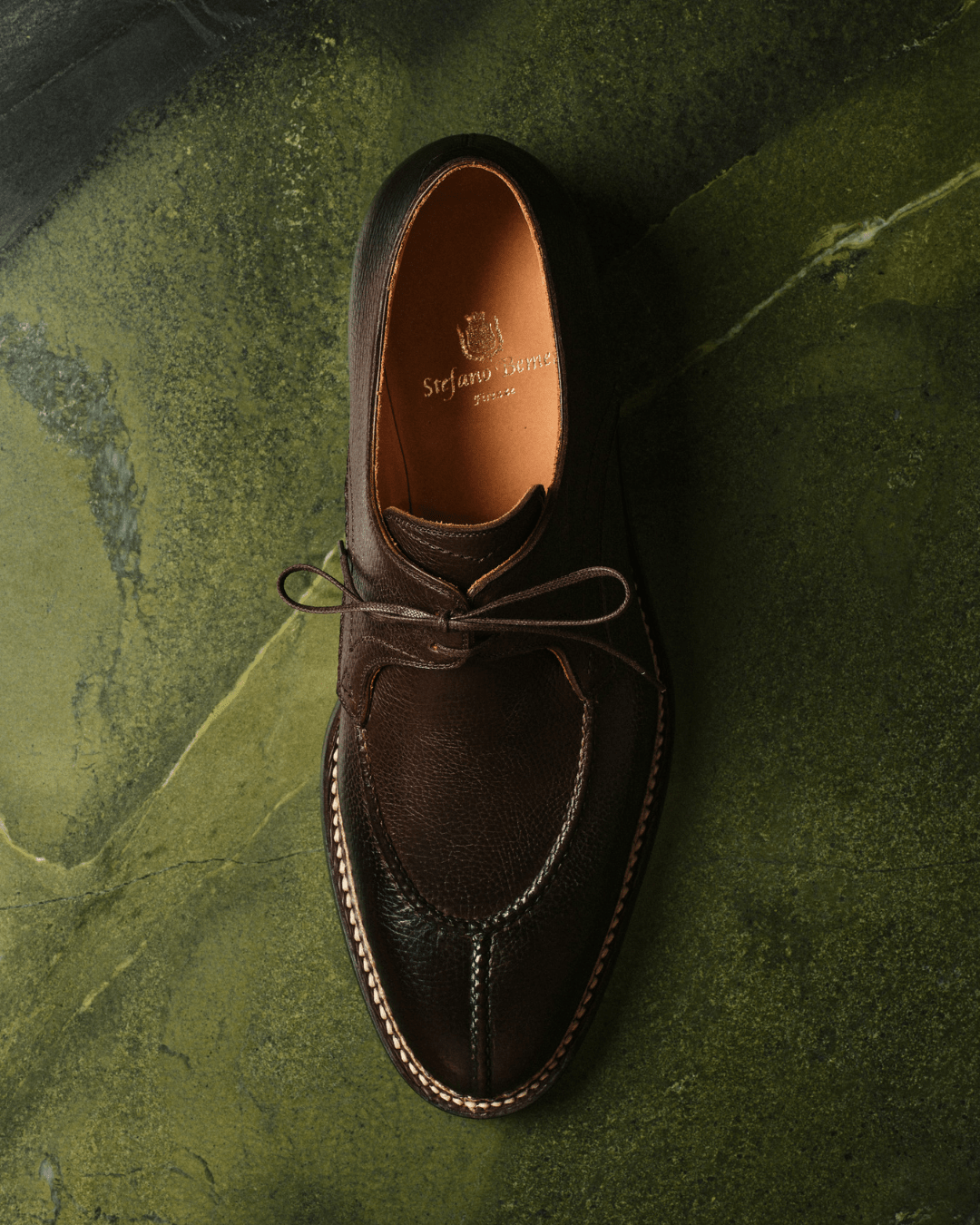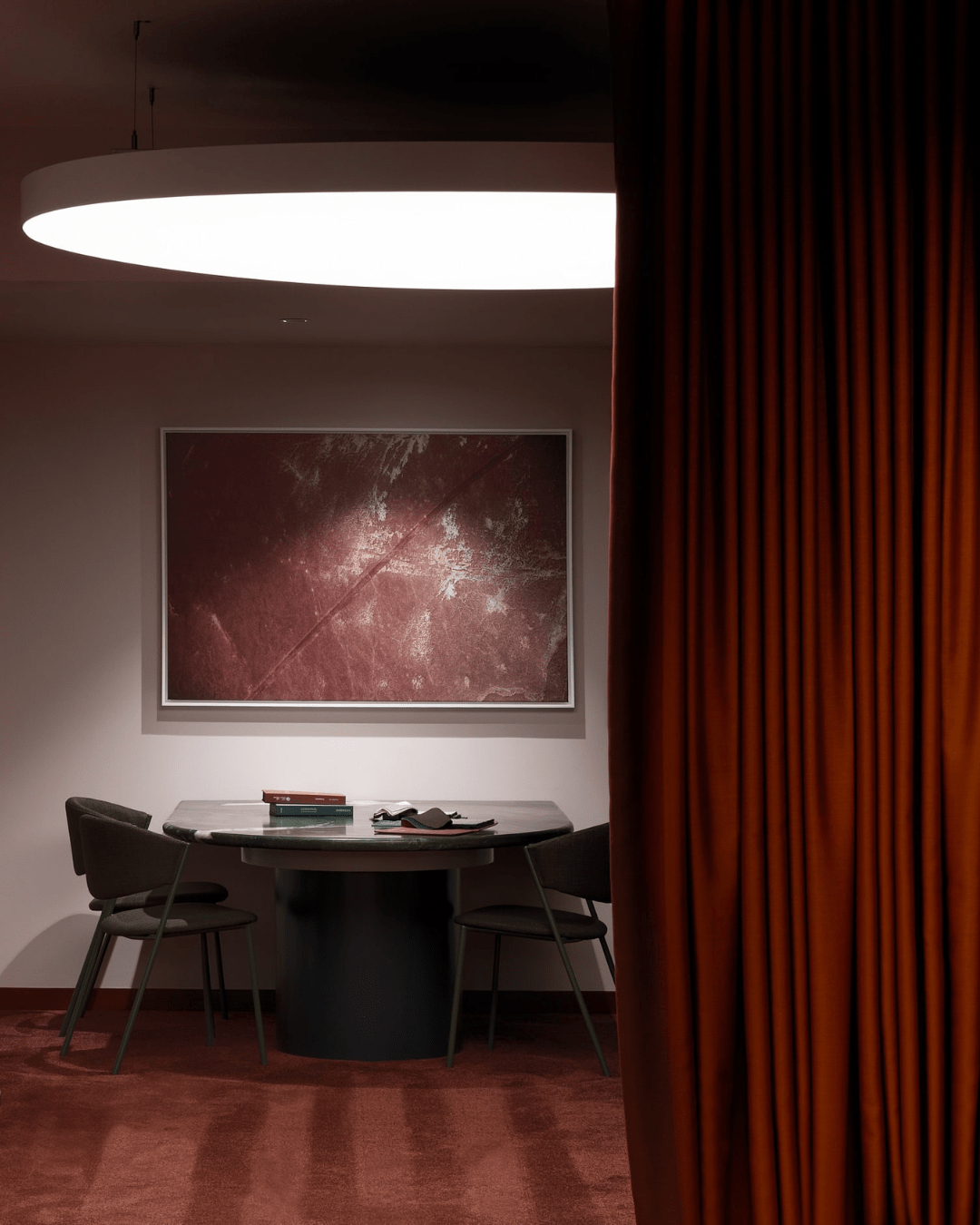THE BESPOKE SUIT

Made totally by hand. Crafted by artisans in Japan. Cut to one’s exact measurements and postural nuances. Allowing for stylistic expression. The bespoke suit is the ultimate sartorial experience; the purest embodiment of tailoring; the height of luxury.
BESPOKE BY DEFINITION
Bespoke by definition, is something ‘made for a particular customer or user’. In tailoring, however, it means much more than that. In tailoring, the bespoke suit is one made by hand - without the use of machines. The pattern is drawn by hand, the fabric cut by hand, and finally, stitched together and finished by hand. This is the real definition of bespoke, and it is in this way - the proper way - that The Cloakroom defines bespoke.
WHAT IS BESPOKE
What is bespoke at The Cloakroom? Made in Tokyo, The Cloakroom’s bespoke offering is defined by the subtle hallmarks of handwork. It can be felt in the hand-padded chest canvas and in the tactility of the hand sewn buttonholes. It can be seen in the imperfect row of fine stitches that trace the lapels and pockets, and in the gentle roll of the lapel.
What is bespoke to others, is not bespoke to The Cloakroom. The bespoke suit is not made with glues or fusing - it is made with a full floating canvas. The bespoke suit is not mass produced in a factory - it is crafted by an artisan and takes shape over days, weeks and even months. The bespoke suit is not made of synthetic cloth - it is cut from natural fibres sourced from the finest mills. The bespoke suit is neither baggy nor too tight - it is perfectly proportioned.
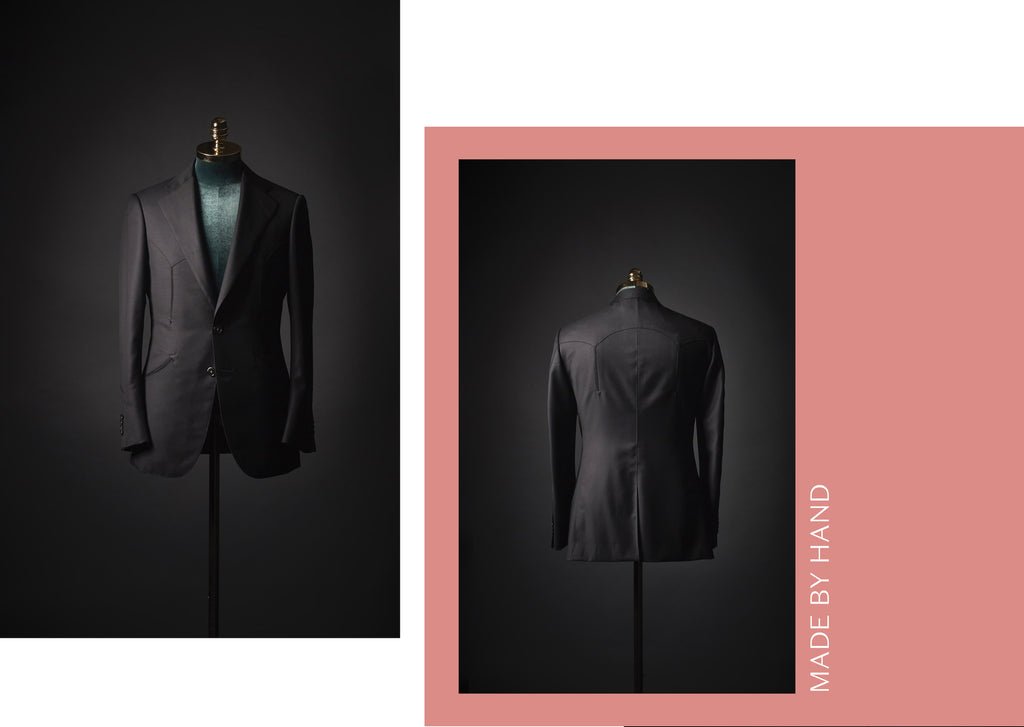
BESPOKE VS. MADE TO MEASURE
The Cloakroom focuses on made to measure tailoring, however a small percentage of garments are made bespoke for clients looking to commission interesting or unique pieces.
The Cloakroom crafts made to measure garments under very similar methods to bespoke. Both are bound by the same attention to detail and precision that defines Japanese craftsmanship. Suits are made with a full floating canvas. All garments are cut from luxury cloths. Shape, size and postural nuances are all accounted for.
To have garments made bespoke is a time consuming venture. The pattern must be drawn by hand, the fabric cut by hand and the garment sewn by hand. Bespoke requires several baste fittings before the garment is completed, whereas made to measure requires only one fitting before the final garment is delivered. Minor adjustments may then made to the finished garment. In essence, the distinction between bespoke and made to measure lies not necessarily in quality, but in handwork and expedience.
